2.7.3: Classification of deltas
- Page ID
- 16286
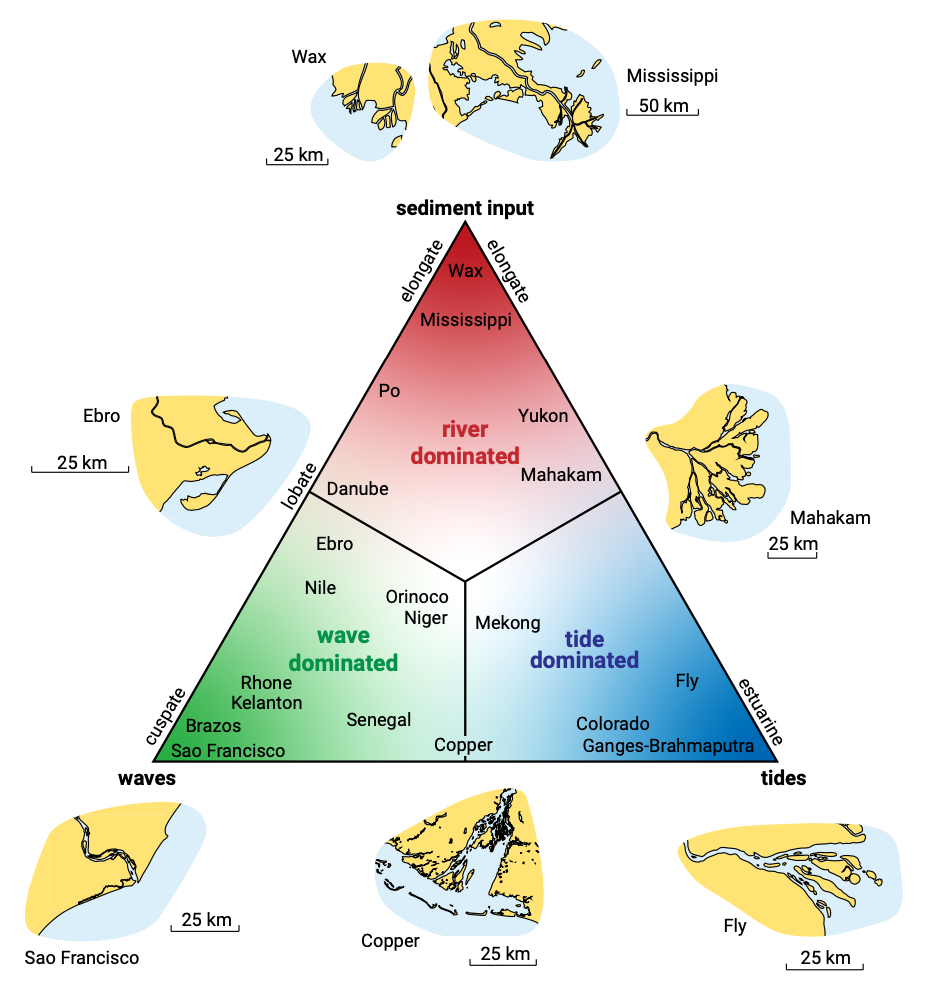
The formation of a delta depends on the interaction between the river flow and sed- iment supply on the one hand and the distribution of the river sediment by waves and tidal currents on the other hand. William Galloway recognised the relative influence of these three major factors affecting delta development (river, waves and tide) on the morphological structure. He proposed the triangular classification diagram of Fig. 2.44, in which river-dominated, tide-dominated and wave-dominated deltas are distinguished.
As the water flows from the river mouth, its velocity decreases and it loses its capacity to carry sediment. Consequently, sediments accumulate in the river mouth area. As the velocity of the outflowing river water decreases, the coarse material settles first, followed by the finer sediments. At the seaward edge of the delta front, the suspended sediment in the river water finally settles out into the deeper coastal water. This mud accumulation is generally very thick and extends across part of the continental shelf. The amount and configuration of sand accumulating in the delta-front depends on the relative roles of the interacting river, wave, and tidal currents.
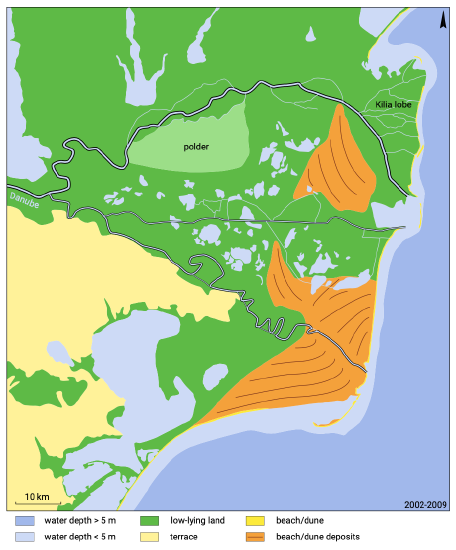
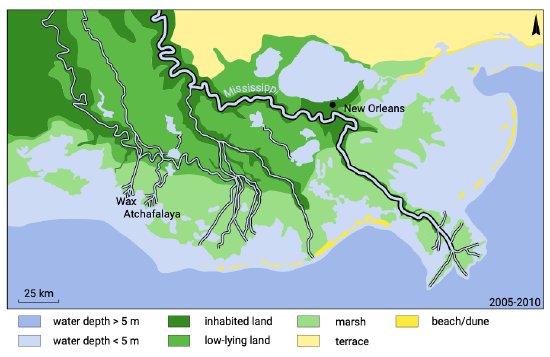
A common type of sand accumulation is a sandbar that forms just seaward of the channel mouth and typically causes the channel to bifurcate. Another is the formation of banks along the sides of the channel. As the river deposits sand in the mouth, the situ- ation can be reached in which the water level is affected by the sand deposits. The river can then overflow its banks and then divide into distributary channels. Each distributary channel then continues to transfer massive amounts of fine-grained sediment to the coastal area. When this new-born delta is situated in an environment with little tide and wave action, it is categorised as being river dominated. It can grow out into a bird foot type of delta. Examples are shown in Figs. 2.45 and 2.46 (Danube Delta and Mississippi River, respectively).
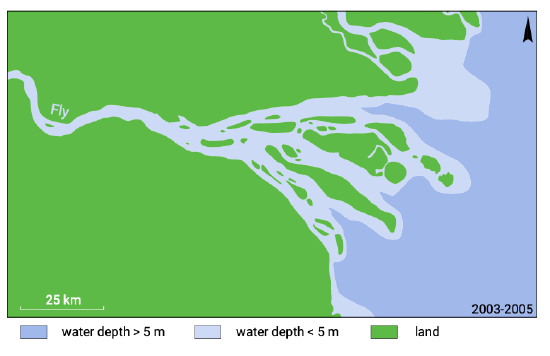
Tide-dominated deltas develop where a large range between the high and low tides leads to strong tidal currents. On these coasts, the wave height is moderate to low, and wave-induced currents along the coast are weak. These deltas resemble estuaries because of their embayed setting of salt marshes, swamps, and tidal flats. An example of such a tide-dominated delta is the delta of the river Fly on the south coast of Papua New Guinea (Fig. 2.47).
If the wave climate is more severe, the bars at the river mouth are affected by the waves. As a result of the wave action, sand is repositioned by alongshore and cross-shore effects. Depending on the wave direction, this can lead to a delta that is symmetrical (in the case of waves perpendicular to the coast) or asymmetrical (in the case of obliquely incident waves) in shape.
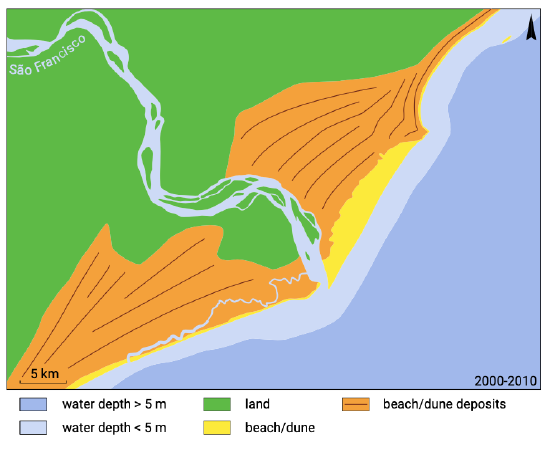
Wave-dominated deltas typically have a rather smooth shoreline with well-developed beaches and dunes. The delta plain tends to have few distributaries; some deltas of this type have only a single channel. A wave-dominated delta is generally smaller than other types, because the distributing power of the waves striking the delta front is stronger than the carrying power of the river. When the wave climate is strong enough to carry all the river sediment away, the delta will shrink and eventually disappear. Two different shapes characterise these deltas. The general shape is symmetrically cuspate. One of the best examples is the delta of the São Francisco in Brazil (Fig. 2.48).

The other shape is characterised by a strong longshore current. A sand spit (an elongated and narrow accumulation of sediment that is attached to land at one end, see Ch. 8) develops and protects the extensive wetlands that cover the delta plain. An example of this is the Ebro delta (Fig. 2.49).


